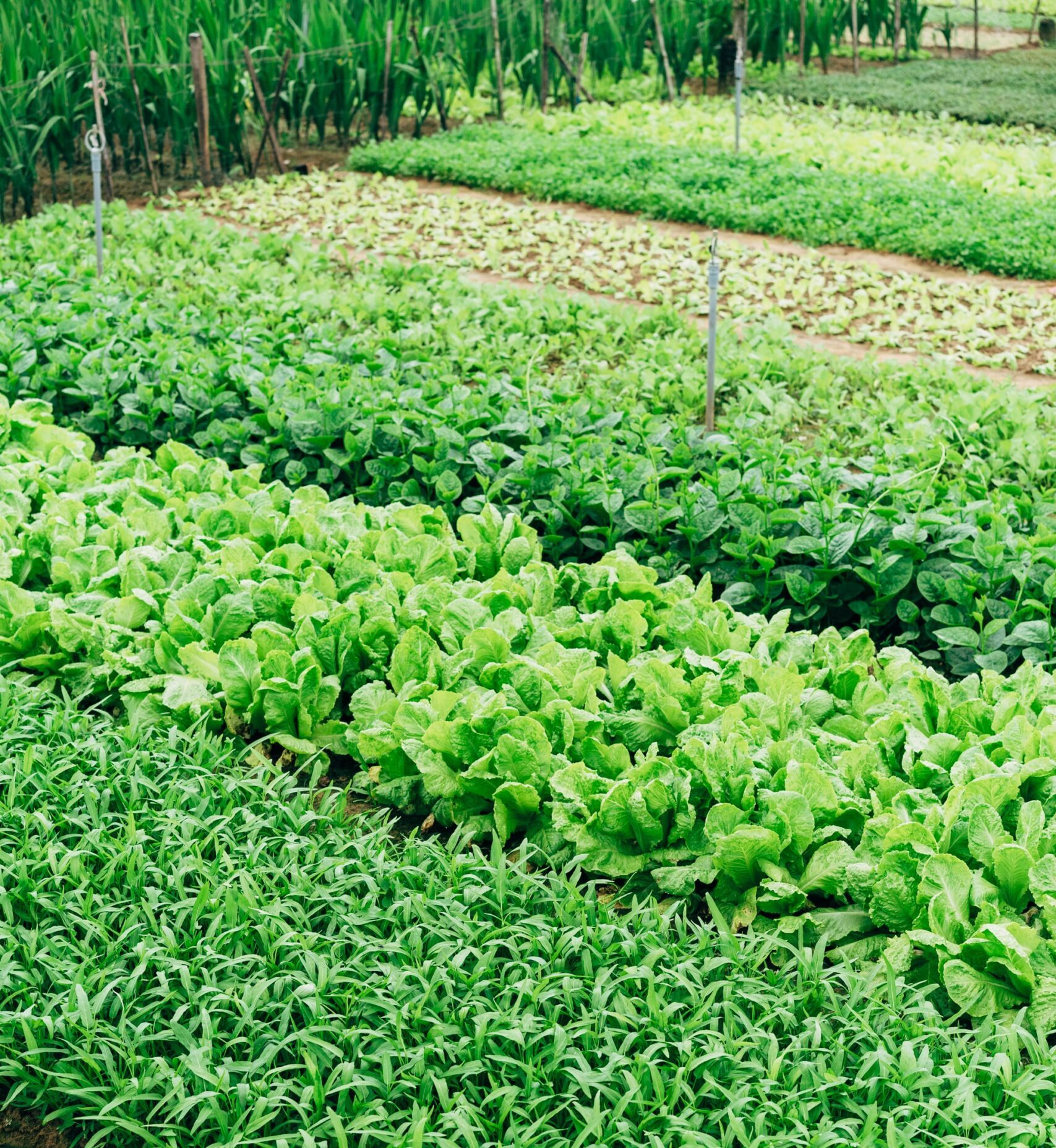
There’s no denying that drought is becoming more and more of a problem worldwide, with climate change and intensive animal agriculture causing the spread of desertification. And while of course prevention is key and we need to focus on reducing emissions and the consumption of animal products, there are some incredible, inventive drought solutions taking place around the globe to combat the effects of drought. Let’s take a look and admire because these engineers really deserve global applause.
Desertification is a process whereby arable land becomes devoid of both nutrients and moisture, thus rendering it barren. Globally, it is occurring at a rate of approximately 12 million hectares per anum. That’s both staggering and tragic for those people plagued by the drought and subsequent hunger that ensues.
Arid deserts are known for their vast beauty and also their hostility. They’re tranquil badlands, places we might choose to venture, but only settle into if liveable conditions were to be guaranteed. But what about those people in developing nations who have no choice? What if the desert is your home and one that you simply need to learn to cope with?
There are some ingenious drought solutions that have been born from creative ambition to solve the drought problem. With such a large global population, it’s essential that we fight to salvage maximum surface area of our globe. These research projects and technologies support that. Whether it’s increasing crop hardiness, boosting water supply, or increasing available nutrients, these projects all have one thing in common: giving more to the people.
1. Resurrection crops, South Africa 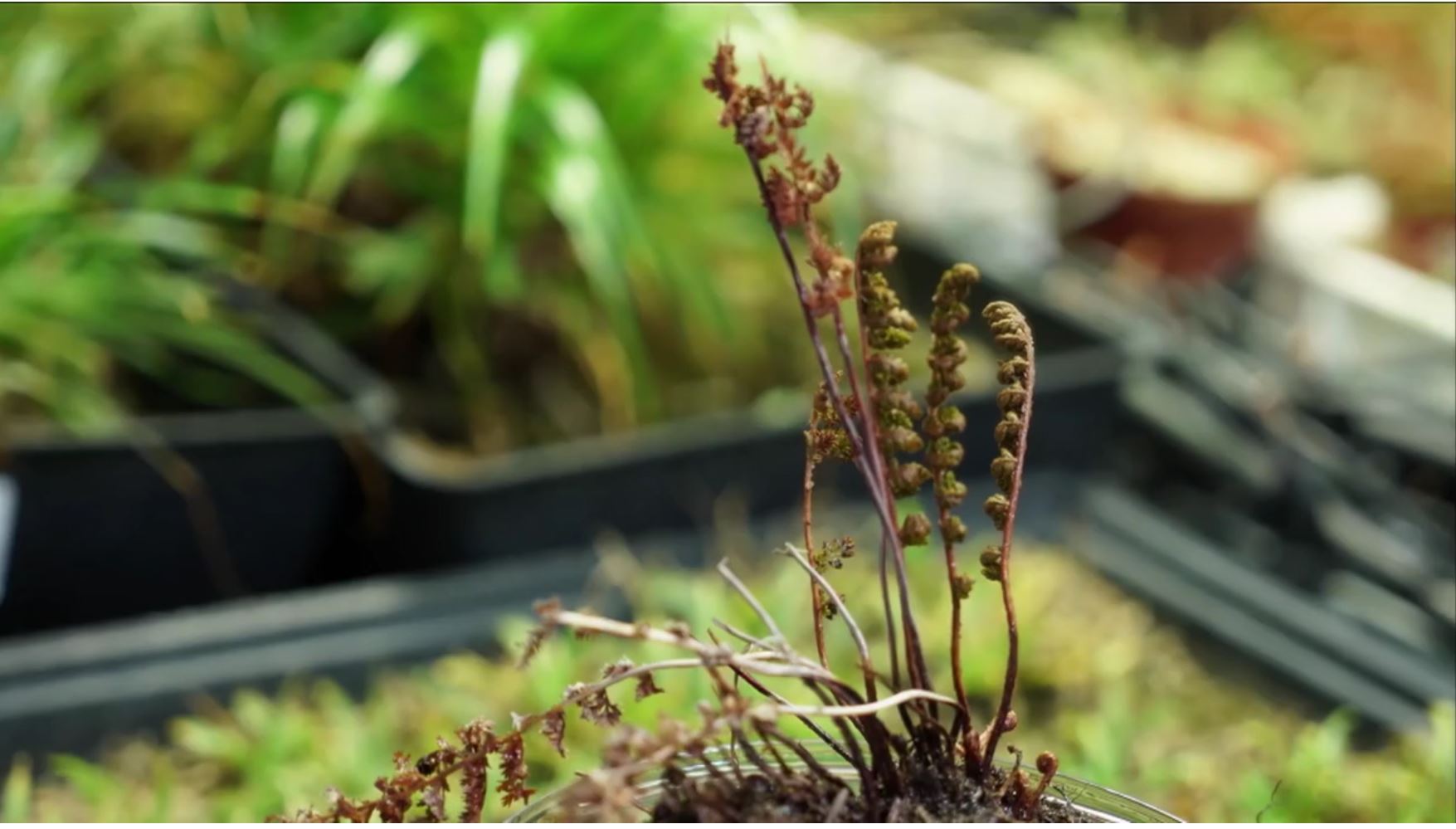 Jill Farrant is a Professor of Molecular and Cell Biology at the University of Cape Town in South Africa. She’s dedicated her career to researching resurrection plants, or those that can come back strong after years without water. This is an undeniable benefit for Africa, where southern and eastern parts are home to over 36 million people going hungry. In a Q&A with Al Jazeera last week, Farrant spoke about how we need to be more open-minded about genetically modifying crops in ways that can benefit us, e.g. plants that are able to withstand long periods without water. While it’s not the only answer to our problem, this definitely has tremendous potential for preserving plant life already in the ground.
Jill Farrant is a Professor of Molecular and Cell Biology at the University of Cape Town in South Africa. She’s dedicated her career to researching resurrection plants, or those that can come back strong after years without water. This is an undeniable benefit for Africa, where southern and eastern parts are home to over 36 million people going hungry. In a Q&A with Al Jazeera last week, Farrant spoke about how we need to be more open-minded about genetically modifying crops in ways that can benefit us, e.g. plants that are able to withstand long periods without water. While it’s not the only answer to our problem, this definitely has tremendous potential for preserving plant life already in the ground.
2. California Safe Soil, USA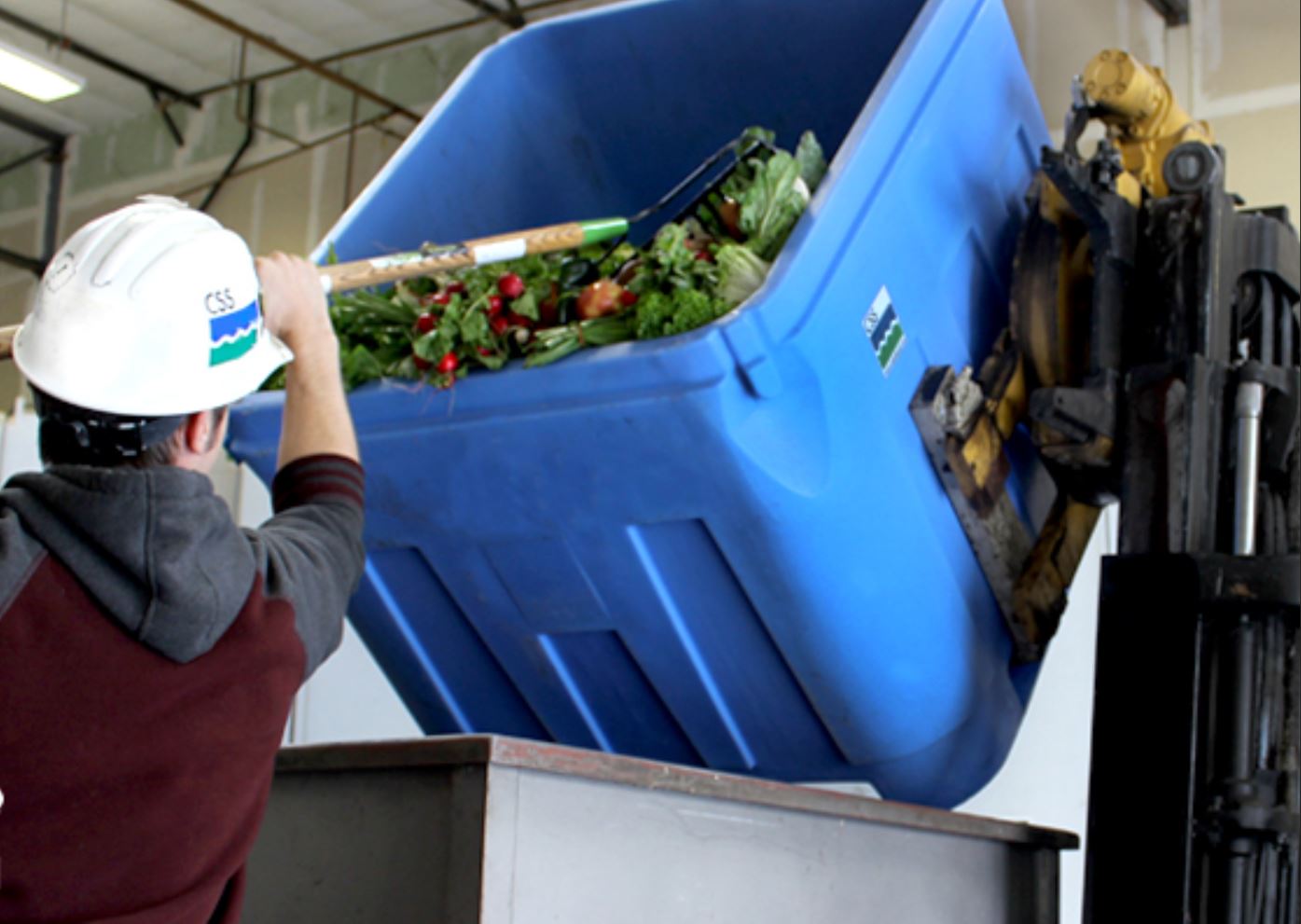 All about recycling, California Safe Soil (CSS) focuses on the importance of harvesting nutrients from supermarket waste and giving them to soils in need. This increases productivity in a state that’s been in “drought emergency” since 2014. Using aerobic, enzymatic digestion, CSS makes the process of transforming food to fertilizer rapid, where it would otherwise take approximately 3 months using standard composting methods. This reduces the risk of harboring pathogens which could cause health risks to those working with the fertilizer in situ. It also uses up supermarket waste, therefore reducing the quantity going to landfill.
All about recycling, California Safe Soil (CSS) focuses on the importance of harvesting nutrients from supermarket waste and giving them to soils in need. This increases productivity in a state that’s been in “drought emergency” since 2014. Using aerobic, enzymatic digestion, CSS makes the process of transforming food to fertilizer rapid, where it would otherwise take approximately 3 months using standard composting methods. This reduces the risk of harboring pathogens which could cause health risks to those working with the fertilizer in situ. It also uses up supermarket waste, therefore reducing the quantity going to landfill.
3. BioGill, Australia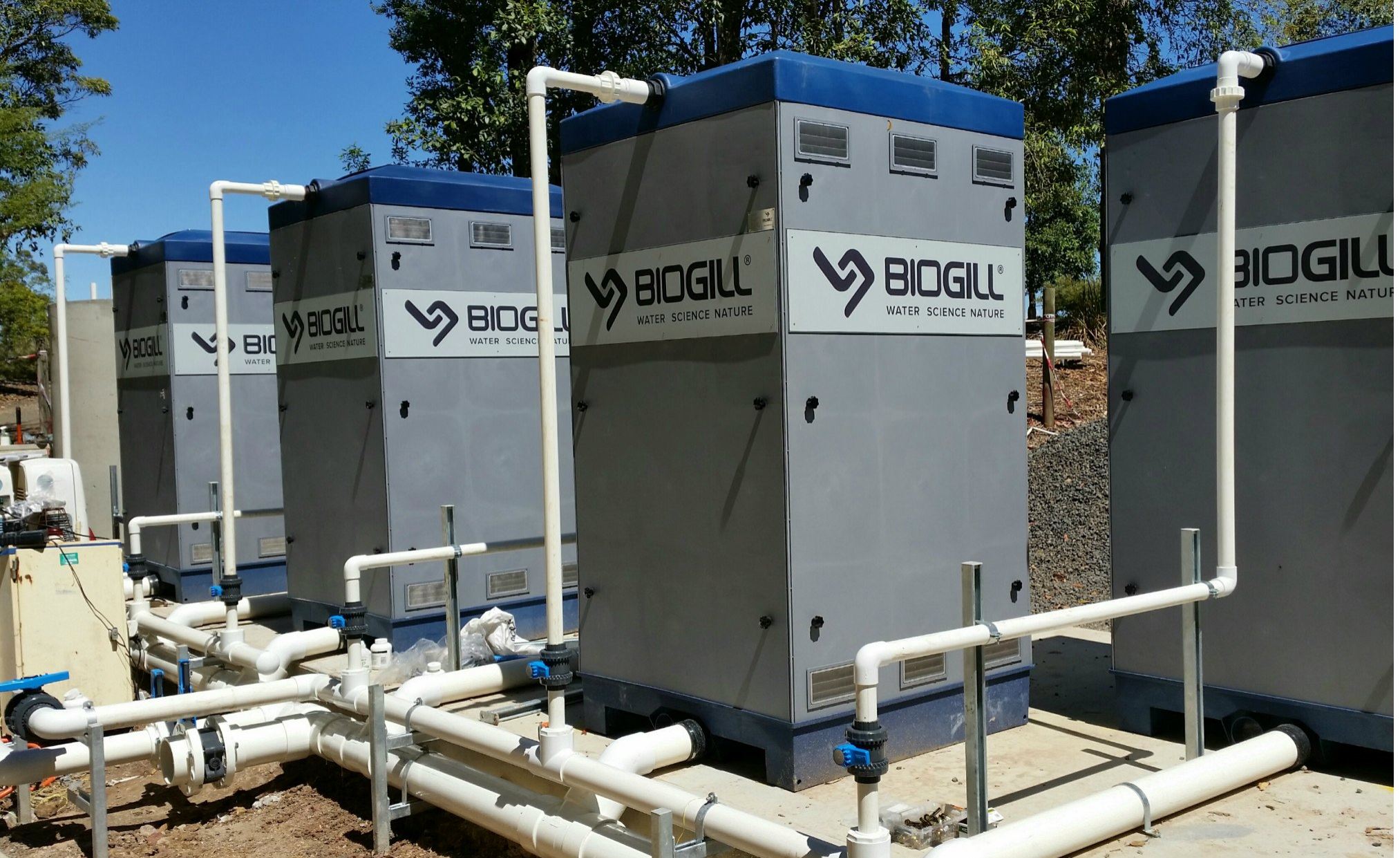 In a country that’s 70% desert, Australian biotechnology company, BioGill searched for a way to harness more water where needed. Using bioreactors and biofilters in wastewater treatment facilities, the company uses bacteria to recycle wastewater into that which is drinkable again. From reducing ammonia in fish farms to decentralizing sewage waste, BioGill technology is being used around the world to clean up contaminated water and put it back into action for consumption.
In a country that’s 70% desert, Australian biotechnology company, BioGill searched for a way to harness more water where needed. Using bioreactors and biofilters in wastewater treatment facilities, the company uses bacteria to recycle wastewater into that which is drinkable again. From reducing ammonia in fish farms to decentralizing sewage waste, BioGill technology is being used around the world to clean up contaminated water and put it back into action for consumption.
4. University of California, Berkeley, USA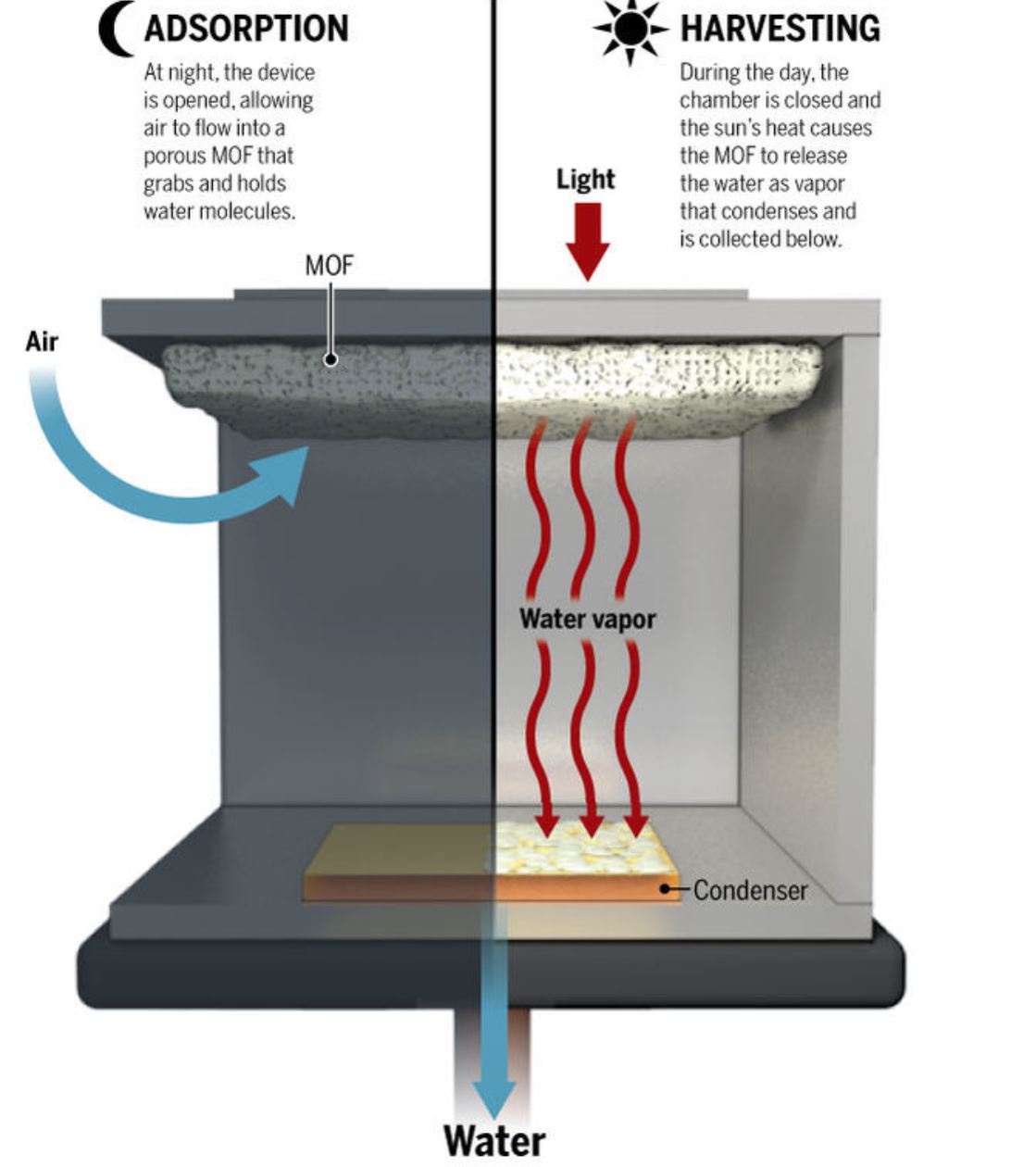 UC chemist, Omar Yaghi looked at metal organic frameworks (MOFs) when investigating a way to pull water out of thin air. Yes, even in desert environments. Using some clever engineering and the energy of the sun, this device isolates water droplets from the air, collecting 2.8L in total, per 1 kg of MOF used. There is huge potential here for these to be rolled out across the world.
UC chemist, Omar Yaghi looked at metal organic frameworks (MOFs) when investigating a way to pull water out of thin air. Yes, even in desert environments. Using some clever engineering and the energy of the sun, this device isolates water droplets from the air, collecting 2.8L in total, per 1 kg of MOF used. There is huge potential here for these to be rolled out across the world.
5. Tal-Ya, USA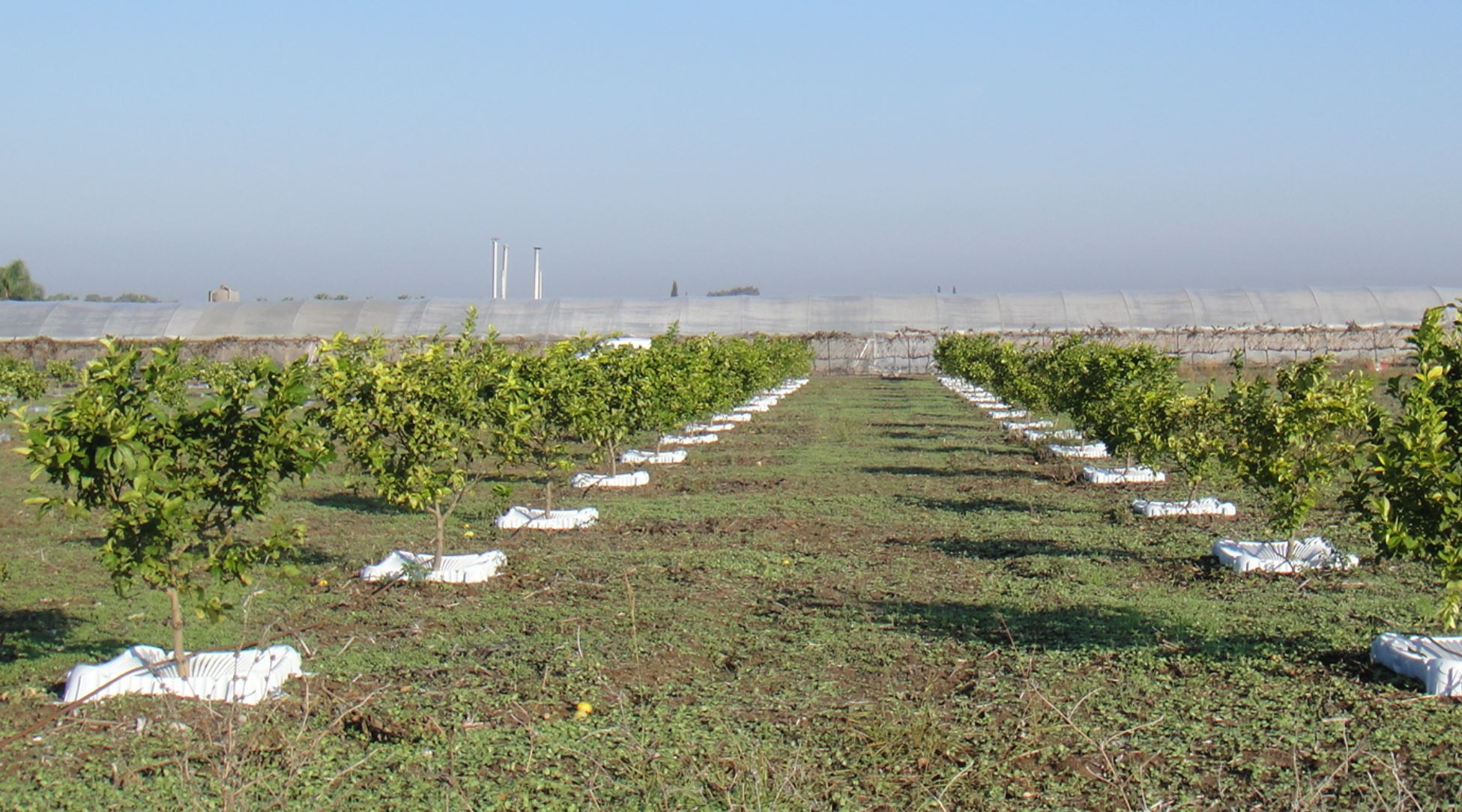 A US agricultural solution, Tal-Ya is a patented system whereby a polypropylene tray covers the plant’s root system while it grows. This allows it to direct nutrients and water to exactly where they are needed while preventing temperature extremes from causing damage. Easy to use and estimated to save 50% of resources that would otherwise go to waste, Tal-Ya are being used in farms around the world to save both money and the environment and increase productivity.
A US agricultural solution, Tal-Ya is a patented system whereby a polypropylene tray covers the plant’s root system while it grows. This allows it to direct nutrients and water to exactly where they are needed while preventing temperature extremes from causing damage. Easy to use and estimated to save 50% of resources that would otherwise go to waste, Tal-Ya are being used in farms around the world to save both money and the environment and increase productivity.
There is a long way still to go in the mission to regain equilibrium on our planet, but creative engineering is playing a big role in offering drought solutions. Our priority needs to be combatting climate change, but I look forward to seeing what’s churned out by our compassionate scientists over the coming years to offer life to those places from where it is being stolen.
Are you affected by drought where you live? Have you heard of any of these drought solutions?
Also by Kat: The Arctic Has Lost Its Ice And Gained All Our Trash
Related: A Few Smart Initiatives Stand Between Global Warming and Utter Devastation of Our Oceans
Climate Change Is Starving Millions Right Now. Why Isn’t This A Thing Yet?
Get more like this—Subscribe to our daily inspirational newsletter for exclusive content!
__
Photo: Unsplash, Al Jazeera, California Safe Soil, Biogill, Science Mag, Tal-Ya




